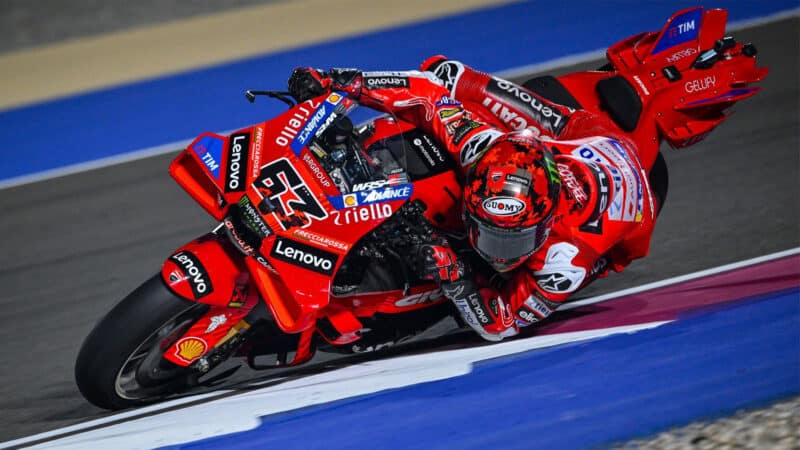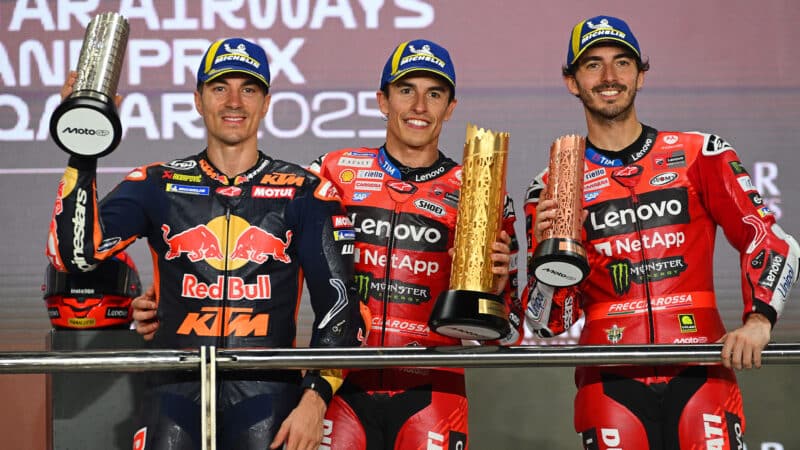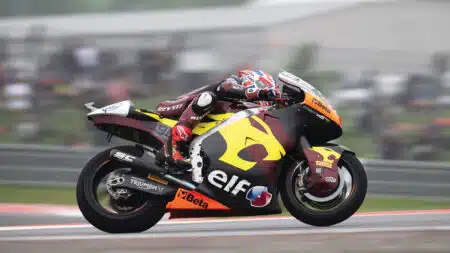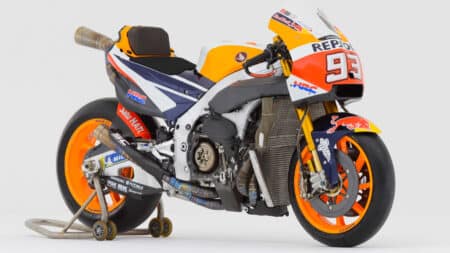The Tech 3 KTM rider had qualified sixth fastest and his pace during practice suggested he would spend the race battling in the pack, surrounded by burning-hot bikes which would heat his front tyre, increasing its pressure, shrinking its footprint and reducing grip. Therefore his engineers set the pressure on the low side, predicting it would increase to a good pressure during the race.
Instead, Viñales got a good start, moved into third, took the lead and then spent the last part of the race alone in second place, behind winner Marc Márquez.
Thus his front tyre enjoyed cool air through most of the race, so it didn’t increase pressure as predicted and was below the minimum for more than 60% of the race. Thus Viñales was hit with a 16-second penalty, which dropped him from second to 14th, giving him two points instead of 20.
(When the rule was fully implemented for the first time last season, the punishment was disqualification. That was soon changed to a 16-second penalty, because MotoGP bosses were terrified by the possibility of perhaps half the grid being wiped from the race results.)
How did the Viñales Qatar sanction affect other riders? Márquez was unaffected because he finished in front of his countryman, while Pecco Bagnaia gained four points (he was promoted from third to second, giving him twenty points instead of sixteen), Franco Morbidelli gained three, Johann Zarco gained two and so on.
Now imagine if Bagnaia beats Márquez to this year’s championship by three points. That wouldn’t be fair, because the rule is so arbitrary and because those three points weren’t even created by Bagnaia and Márquez.

Bagnaia was gifted four championship points by Viñales’ Qatar penalty
Michelin
Is the rule really arbitrary? Yes, because engineers don’t arrive at their desired pressure via solid calculation but by ‘guesstimation’ and prophesy.
Also, if the championship were to be decided by a fart’s worth of air it would be a disaster for MotoGP because it would turn off so many fans. The tyre rule is already unpopular enough, because no one wants the world’s premier motorcycle championship decided by something as insignificant as tyre pressure, especially when the tyre belongs to another rider. And because this rule is only there to fix a situation that shouldn’t exist.
To further illustrate the point, a similar situation would’ve arisen at last year’s Indonesian GP, if second-placed Pedro Acosta had been sanctioned for his front tyre running under pressure. In fact he avoided a penalty, because the wheel rim was cracked.





